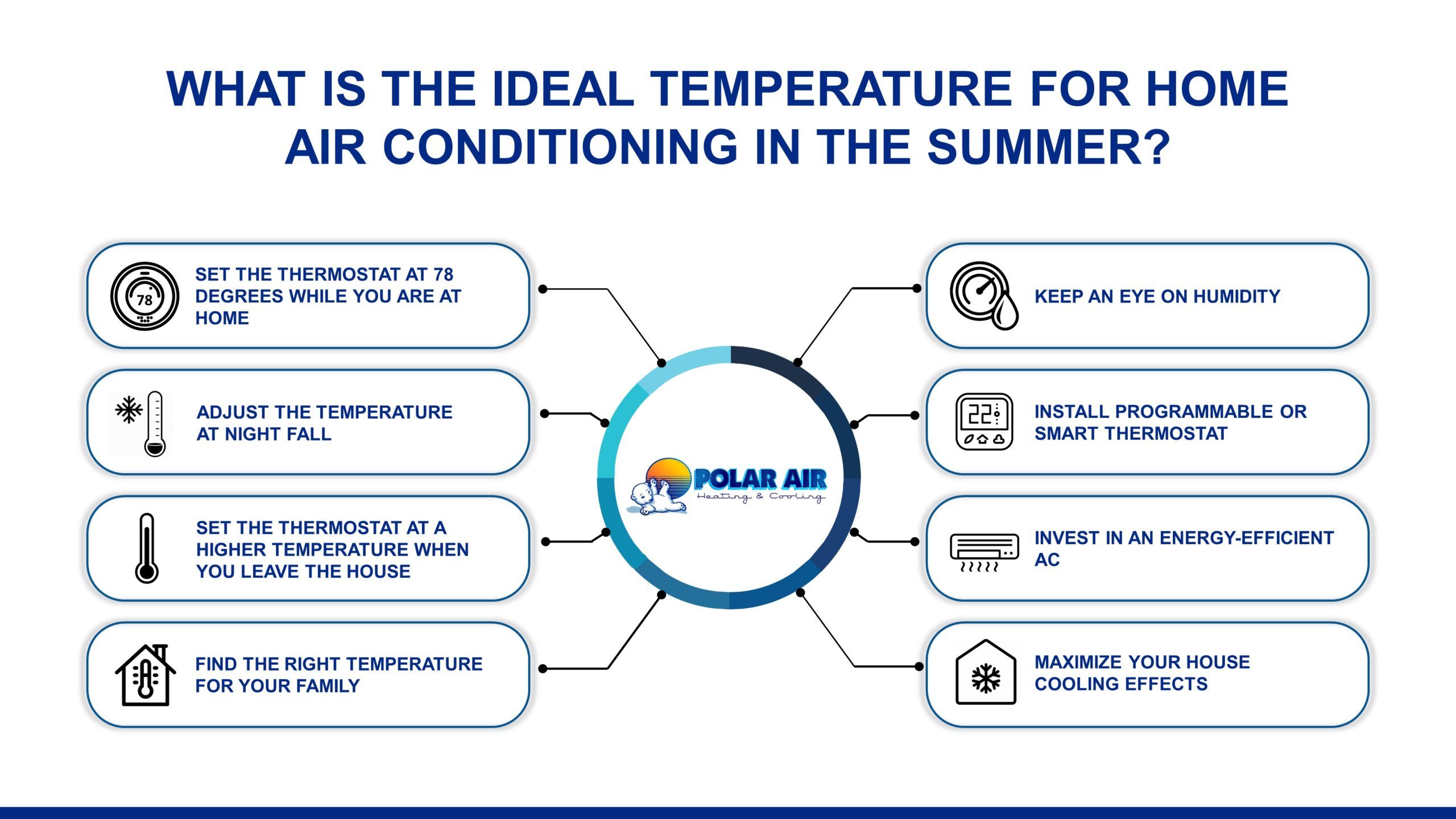An air conditioner is an essential unit to most homeowners that offers relief in the hot summer months. However, setting and maintaining the right temperature that strikes a balance between comfort and reasonable energy bills can be quite a challenge. The ideal temperature setting for your AC will vary based on your location and preferred comfort level. Anything between 72 to 78 degrees Fahrenheit is standard, but you can still make adjustments throughout the day to meet your unique needs. Here is a detailed guide to help you maintain the most efficient summer temperatures.
1. Set the Thermostat at 78 Degrees While You Are at Home
The US Department of Energy suggests that you maintain your AC at 78 degrees while you are at home. This setting will keep your house comfortably cool and prevent unusual electricity bills. If this temperature seems relatively too warm for you, try shifting the settings further down by one to two degrees.
2. Adjust the Temperature at Night Fall
If you enjoy sleeping in a warm room, consider setting the temperature 4 degrees higher than the daytime settings. Raising the temperature to about 80 degrees and sleeping with little or no bedcovers will help save energy. However, if you love to sleep in a cooler environment, set the thermostat between 60 to 67 degrees. Note that this temperature setting option will cost you more.
3. Set the Thermostat at a Higher Temperature When You Leave the House
If the house will remain unoccupied for several hours, turn your thermostat setting seven to 10 degrees higher. You can potentially save as much as 10% of your cooling bills if you maintain such settings for eight hours a day. The higher interior heat prevents the flow of more heat into the house, making it easier to cool the space. While you might think that turning the AC entirely off is an ideal solution, it will end up increasing your energy usage. Your unit will draw more energy to cool your house to a comfortable zone once you turn it on.
Once you come back to the house, you shouldn’t set the thermostat too low to cool the home quickly. The AC will cool at the same rate, but it will run longer before attaining the set temperature. This will only cause more strain on the AC components, and you are likely to experience a breakdown that calls for emergency repair or expensive replacement.
4. Find the Right Temperature for Your Family
Try and experiment with your thermostat to get a suitable temperature setting for your home occupants. Start by setting the thermostat at 80 degrees to see how your family members will react. If they don’t like it, drop the temperature each day by two degrees till you get to 71 degrees. Now find the average desirable temperature in your household and work by this.
Let’s say that your household’s ideal temperature seems to be around 71 degrees. Try and see whether you still feel comfortable at 72 degrees. Keep raising the temperature to 76 degrees. You might begin to feel like you are getting a little bit sweaty and uncomfortable at this range. So now shift the settings a little bit lower to 74 or 75 degrees. You will notice that your house is moderately cool in this range, you aren’t uncomfortable, and you still manage to save on bills.
5. Keep an Eye on Humidity
High moisture level in the air cancels the AC’s cooling effect. The humidity slows the sweat evaporation process from the skin, which inhibits your body’s natural cooling mechanism. As a result, the house will always feel hotter, and you will need to run your AC longer to maintain a desirable temperature. You are more likely to feel more comfortable when you set your AC thermostat at 75 degrees in a less humid house than when set at 68 degrees in a place with extremely high humidity.
The right size AC will help you minimize moisture in the air. However, if you go for an oversized unit, it’s likely to cycle on and off frequently, and it might not adequately draw out moisture from the house. If you live in a highly humid region, it’s a good idea that you invest in a dehumidifier that will help maintain the humidity level at 30% to 50%.
6. Install Programmable or Smart Thermostat
If you wish to avoid adjusting your AC temperature manually, you can install a programmable thermostat. It enables you to pre-set different temperatures at various points of the day. A programmable thermostat will set the right temperature when you are in or away from your house to avoid unnecessary energy wastage.
Alternatively, you can opt for a smart thermostat that enables you to control your AC temperature remotely from your mobile device. This way, you can set your AC to cool your house just before you get back, track your energy usage, and even adjust it to your schedule changes.
7. Invest in an Energy-Efficient AC
Call an HVAC technician to assess the efficiency level of your AC. An old or neglected unit will struggle to reach your set temperature, which results in more energy consumption. You can do some simple tasks, like changing the filters and cleaning the AC coils, which improves airflow vital in the air conditioning process. Have a professional clean the unit often, recharge the refrigerant and lubricate moving parts to ensure that the system works at optimum efficiency. If you have an extremely worn-out or old AC, consider upgrading to one with an ENERGY STAR rating. Newer models have two-stage cooling and variable fan speed that allows you to set your thermostat slightly higher and still enjoy the same comfort level.
8. Maximize Your House Cooling Effects
If you have a ceiling fan, rather than setting the thermostat at 78 degrees, you can set it at 82 degrees, and you will still feel comfortable. The fan will make your body feel cooler than the actual room temperature since it blows cool air to your skin, increasing the evaporation rate. Other ways you can maximize the AC cooling effect include insulating your house adequately and limiting the use of heat-generating equipment. Also, occasionally open the windows and turn your AC off at night to allow natural cooling of your home.
Always remember that the higher you set your thermostat, the lower the energy consumption. Since everyone has unique comfort zones, keep adjusting your thermostat until you find your ideal range. By observing the above AC temperature setting variations, you should keep your house at the right temperature at a lower cost. If your AC struggles to meet the set temperature level, there could be an underlying issue that needs immediate attention. Liaise with your technician to diagnose and fix the problem.





















